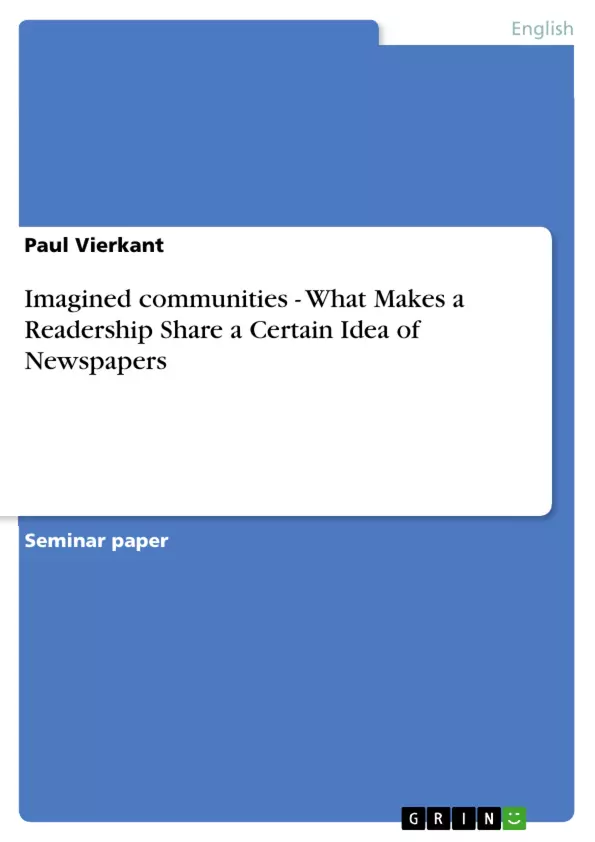„Paper is patient! “my high school physics teacher used to say, when he corrected our exams. As he explained to us, he had heard this old printers saying many times before from his father, who was in the printing business himself. This motto is more than simply a justification for the laziness of my teacher who almost never corrected our tests on time. Since it comes out of the printing business – a business hundreds of years old – it has a broader meaning. It expresses the enduring existence of the written word. Hence, letters, black on white, are records of people’s thoughts and opinions at specific points in time, from early signs of human existence on cave walls to digital letters on our modern-day computer screens.
Newspapers as a medium for writing are of special interest to historians as well as to ordinary people like you and me. Throughout history newspapers have reflected society. However, it would be an over-simplification to reduce the complexity of newspapers to the mere role of mirroring. They give us useful information about editors, journalists and authors. Their patient words waiting to be read become vibrant thoughts – even though reader and source might be years apart. It is the dichotomy of individual and collective experience in reading that creates a readership. Benedict Anderson’s concept of imagined communities fits into this context incredibly well. Although a reader might not know all the other readers of his or her newspaper, they still have one thing in common – they have all held the same information in their hands and read the same news. Thus the reader – being aware of this indirectly shared experience – imagines his community of fellow readers. While Anderson refers to communities that overcome all distances I would apply his model to distances in time. It is because of the lasting effect of the written word that, although I am culturally embedded in the 21st century, I can still read, be impressed and influenced by, or even identify with an article that is almost one hundred years old. I leaf through the same pages, look at the same pictures, and think about the same author as did other readers back then. This process – as an extension of Anderson’s theory – makes me a part of an imagined community that knows no borders, neither in space, nor in time.
Inhaltsverzeichnis (Table of Contents)
- Introduction
- Analysis of Form
- Imagined Community
- Analysis of Content
- Politics
- Women
- Sports
- Advertisements
- Telegraph and Penny Press
- Editorial
- Conclusion
Zielsetzung und Themenschwerpunkte (Objectives and Key Themes)
This work analyzes The Toronto Globe from October 3rd, 1910, to examine the concept of imagined communities in the context of newspapers. The author uses this specific example to explore how the form and content of a newspaper contribute to the creation of a shared sense of identity among its readers, despite the absence of direct interaction between them.
- The role of newspapers in shaping a sense of community
- Benedict Anderson's concept of imagined communities and its application to newspapers
- The influence of form and content on the creation of imagined communities
- The economic triangularity of the editor, the reader, and the newspaper's content
- The fragmentation of newspaper readership into various imagined communities
Zusammenfassung der Kapitel (Chapter Summaries)
- Introduction: The introduction lays out the central argument of the work, which is that the enduring existence of the written word in newspapers creates a readership that shares a sense of community. The author introduces Benedict Anderson's concept of imagined communities and argues that this concept can be applied to newspapers across time, as readers share a common experience of reading and being influenced by the same information.
- Analysis of Form: This chapter focuses on the structural elements of The Toronto Globe, highlighting the absence of thematized sections and the unconventional placement of articles. It explores how the title page and the visual elements, such as photos and caricatures, were strategically used to capture the attention of potential readers.
- Imagined Community: This chapter delves into the concept of imagined communities, specifically as it applies to newspaper readership. It argues that the content of a newspaper is shaped by the cultural, social, economic, and political makeup of its readership, and that this diverse readership can be further divided into various imagined communities based on their interests and preferences.
Schlüsselwörter (Keywords)
Key terms and concepts explored in this text include imagined communities, newspaper readership, form and content analysis, economic triangularity, Benedict Anderson, The Toronto Globe, and fragmented communities.
- Citar trabajo
- Paul Vierkant (Autor), 2005, Imagined communities - What Makes a Readership Share a Certain Idea of Newspapers, Múnich, GRIN Verlag, https://www.grin.com/document/60906



